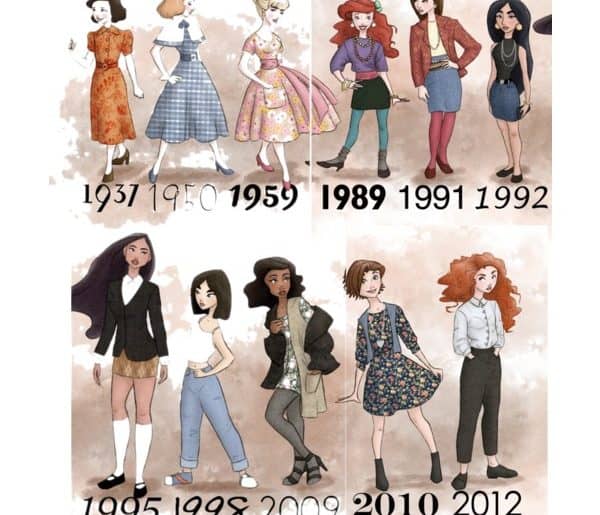It is intriguing to see how the different events in history have influenced and changed the way people have dressed throughout time.
Some of the most popular fashions are classic, and hardly ever “go out of style”, while other clothing items could be considered “fads”- styles that are never to be worn again. Fashion can also be influenced by world events such as war or the economy. For example, during World War II, people were forced to create simple outfits that were practical enough for wartime duties. Let us see how from the 1940s to the 1990s, popular fashions reflected the changes in society as the styles of clothing and accessories evolved with time.
The 1940s
Fashion in the 1940s was a good mix of comfort and glamour. For men, suits, ties and hats were commonplace in public. Women wore dresses and skirts, almost always with a pair of gloves. Fur was very popular, as were animal skins. No animal was off limits, as crocodile purses, lambskin lining, and leather sleeves became popular. Overall, clothes in the 1940s were very bright and colourful.
The 1950s
By the mid-1950s, James Dean from the movie “On the Waterfront” popularised the style of the “greaser”. Swept-up hair, jeans and leather jacket defined the look of a rebellious teenager who felt misunderstood by his parents. The waistline was a major issue in the 1950s. Some women liked the snug fit of their dresses while others liked the dresses with no waistline, often referred to as “sack dresses.” The important thing is that people were beginning to feel a little more freedom when it came to their fashion choices. No longer did people feel like they had to conform to a certain look for certain situations. Moreover, 1957 was the year in which Gabrielle “Coco” Chanel (at age 74) became “an adjective in her own time.”
The 1960s
Fashion in the 1960s was bi-polar in just about every way. While the early sixties witnessed styles which were more conservative and restrained, the late 1960s popularised psychedelic dyed shirts, long hair and beard for men and unbelievably short skirts for women. It’s almost like the 1950s bottled everyone up to such an extent that in the late 1970s, they exploded like an old pressure cooker. In the 60s, for the first time in the 20th Century, London, not Paris, was the center of the fashion world.
The 1970s
Much of the experimental, so-called “hippie” style with its floral patterns originated in the early 1970s. It is probably the first decade in history when women could be seen wearing pants in every walk of life. One new style that became quite popular were pants that looked like a dress. They were called Palazzo pants. Men weren’t wearing hats anymore, their hair was much longer and they didn’t always tuck their shirts in.
The 1980s
By the mid-80s, pop music stars like Cyndi Lauper were ushering in an entirely new style, wherein bright coloured accessories like sunglasses, bangles and hoop earrings were a necessity. Loud makeup and neon were no less important in this style. Society’s love for the brand was epitomised by the Coca-Cola brand clothing in 1987. MTV had a huge impact on fashion, as teens across the US were tuning in to watch music videos starring wildly dressed celebrities. By the late 80s, Nike had grown into one of the most profitable clothing companies in the world. Like Coke vs. Pepsi, Reebok vs. Nike was the athletic wear battle of the decade. With the help of Michael Jordan, Nike won the war.
The 1990s
Ripped jeans were popularised for the first time in the 1990s.Teens were digging through their dad’s box of old clothes to get their hands on some authentic ripped jeans to wear. Boys and girls both wore baseball caps in many different ways. By the late 1990s, musicians had a much greater influence on what young people wore than designers. Hence hip-hop style was arguably the most popular among young people.
Feature Image Credits: Polyvore
Vaibhavi Sharma Pathak





Comments are closed.